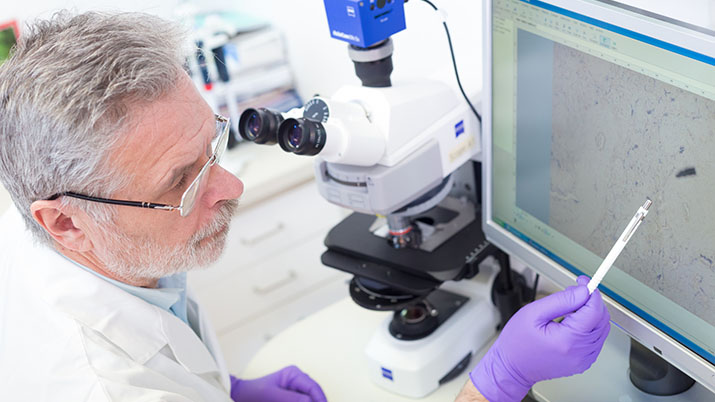During his 2016 State of the Union Address, President Barack Obama introduced the Cancer Moonshot initiative. Aimed at improving our ability to prevent cancer and detect it during the early stages, it also seeks to make more therapies available to cancer patients, according to the website Cancer.gov.
More than 1.6 million new cases of cancer will be diagnosed in 2016, while an estimated 600,000 Americans currently suffering from cancer will die from it, according to the Whitehouse.gov website. For Obama, Cancer Moonshot is all about “harnessing the spirit of American innovation to identify new ways to prevent, diagnose and treat cancer.”
Details of the Cancer Moonshot Initiative
According to whitehouse.gov, the ultimate goal of Cancer Moonshot is to bring about a decade’s worth of cancer research advances in five years.
There are many different types of cancer, each with its own features, driving forces and weaknesses to certain treatments. Knowing the details about how cancer develops and spreads improves the ability of physicians to attack it. For example, recent advances have involved immunotherapy, which activates the immune system against cancer cells. This method has shown success with cancers such as melanoma, lymphoma and leukemia, and scientists are eager to explore the concept further on a broader range of cancers, according to whitehouse.gov.
Another approach is to attack multiple pathways that are fundamental to cancer development. This is done by combining therapeutic agents to prevent resistance. However, much work still needs to be done involving this method.
These are some of the research efforts the Cancer Moonshot initiative will work to accelerate, all while increasing access to data and facilitating collaboration among researchers, philanthropists, doctors, patients, patient advocates, and biotechnology and pharmaceutical companies, according to whitehouse.gov.
The first step was establishing a Cancer Moonshot Task Force, led by Vice President Joe Biden. The task force is responsible for making the most of federal investments, private sector efforts from industry and philanthropy, targeted incentives, patient engagement initiatives, and other financial and fundraising efforts for cancer research.
The Cancer Moonshot initiative initially called for $1 billion in funding to give researchers access to tools they need to accelerate the development of cancer detection and treatments. Some of the government agencies participating in the initiative include the Food and Drug Administration (FDA), National Institute of Health (NIH), Department of Defense (DOD), Veteran Affairs (VA) and the Department of Health and Human Services (HHS).
Within the HHS, any investments made will go toward the following research opportunities:
- Oncology Center of Excellence
- Pediatric cancer
- Enhanced data sharing
- Genomic analysis of tumor and surrounding cells
- Vice President’s Exceptional Opportunities in Cancer Research Fund
- Prevention and cancer vaccine development
- Early cancer detection
- Cancer Immunotherapy and Combination Therapy.
According to whitehouse.gov, this national initiative requires a “whole-of-government approach,” gathering resources across the federal government. Altogether, the initial investments represented a down payment, and the administration is looking forward to working with Congress to secure the next set of investments in 2017.
“The Administration will do everything it can to support research and enable progress while calling on the families, researchers, and physicians across the country to join this effort and confront this challenge,” Biden said.
Important Aspects of the Cancer Moonshot Initiative
In order for the initiative to achieve its goals, much needs to be done that will require a great deal of collaboration. Below are two major aspects that are fundamental to the success of the Cancer Moonshot initiative.
The Blue Ribbon Panel
Before the start of Cancer Moonshot, The Blue Ribbon Panel was created to help ensure the scientific direction and goals of this initiative. The panel is made up of scientific experts, cancer leaders and patient advocates acting as a working group of the National Cancer Advisory Board and will provide guidance from thought leaders in the cancer community, according to the National Institutes of Health (NIH). The members represent a variety of disciplines such as biology, diagnostics, bioinformatics, cancer prevention and treatment, genomics and immunology. Members of the panel also include scientific investigators who have a great deal of experience with clinical trials and cancer health disparities. Members of cancer advocacy groups and pharmaceutical and biotechnology companies will be represented on the panel as well.
The main goal of the panel is determining the best ways to move the themes of the initiative forward. These include the development of cancer vaccines, approaches to early detection, enhanced data sharing, treatment of pediatric cancers, advances in immunotherapy and combination therapies, and genomic profiling of cancer cells and cells in the tumor microenvironment.
Genomic Data Commons
Another important aspect of the Cancer Moonshot initiative is the Genomic Data Commons (GDC), the first national cancer database. It will help researchers better understand the disease so more effective treatments can be developed.
As a part of the National Cancer Institute (NCI), the GDC holds the raw genomic and clinical data for 12,000 patients, and more records will be coming as researchers begin adding to it. The database includes detailed analyses of the molecular makeup of cancers, which treatments have been used and how patients responded. The University of Chicago will be housing and managing the database for NCI, according to The Washington Post.
“One of the initial goals is to bring all the data into one place, analyze it and display it in a uniform way,” Louis Staudt, one of the NCI researchers leading the database effort, told the Post. The value of data sharing has been evident since the beginning of cancer genomics, according to the New England Journal of Medicine.
The sheer size of genomic data sets is just one of the many challenges researchers face when it comes to the sharing of cancer genomic data sets. The GDC addresses these challenges by giving researchers equal access to cancer genomics data.
The GDC is part of a larger initiative to improve the data sharing processes that are already going on throughout the healthcare industry.



